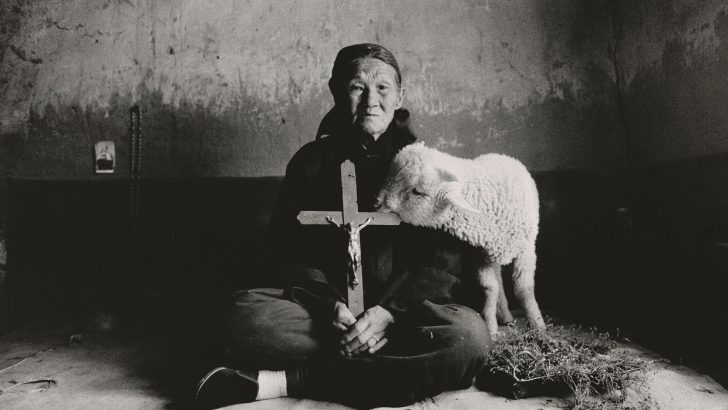The Notebook
Fr Conor McDonough
In the early 1990s, Lu Nan, a Chinese photographer, shot a series of black and white photographs documenting the life of a tiny community of Catholic villagers in Shaanxi. They are all stunning images, and easily found online, but what really stands out for me are the images showing the Mass being celebrated with great solemnity even on tiny altars in ramshackle homes. The Eucharistic reverence of these poor, oppressed people is palpable.
I think of these images sometimes during liturgical celebrations in Ireland. The situation of the Church in Ireland is perhaps unique, in that a substantial proportion of the population is neither thoroughly secular, nor believing, nor even definitively lapsed. Many of our contemporaries exist in a sort of ‘twilight of Faith’: they are familiar with, and even favourable towards, the various rites and rituals, but are, for many reasons, unable to commit themselves entirely to Christ and his Church.
At weddings and funerals and baptisms, these ‘twilight Catholics’ are usually present in large numbers, often outnumbering believers who participate wholeheartedly in the liturgy. There results a certain kind of half-guilty awkwardness that is usually broken, in typical Irish fashion, by laughter, so that moments of silence and solemnity are rarely sustained.
At the after-parties of events like these I’m usually met with a string of Father Ted references, and by jocular but wildly inappropriate comments on the Mass and the priesthood.
As a priest, the temptation is great simply to join in the fun, and to try to raise a laugh at every available opportunity during the liturgy. Of course, there’s no reason to be po-faced – a humourless community is highly unattractive, and a good homily will often contain a few jokes – but I still feel we ought to resist allowing the liturgy to become a flippant affair.
Silence and solemn prayers and gestures are not instant crowd-pleasers. Indeed, they make many of our contemporaries uncomfortable. But if we want our friends to depart their twilight and step into the light of faith, then dignified celebration is the way to go: nobody will be converted by weak jokes, but they may be touched by a biblical word echoing in silence.
Entertainment
If the Mass is thought of as entertainment, it will inevitably be seen as second-rate: social media and showbusiness will always do a better job. But the Eucharist is not entertainment. It is something else entirely: life for a dying world, strength for the weary, consolation for the sorrowful, and our way home.
The believers of Shaanxi understand this: this is why they gather even in the face of danger, this is why they kneel and gaze and weep at Mass. We understood this once. Let’s do everything we can – priests and people – to remember what we have forgotten.
*****
Our valley of tears
I’m blessed to live close to a chapel of perpetual adoration. There I find the Lord in the Eucharist, but also all sorts of people who come before him day and night in desperate need. Last Sunday a woman came into the chapel with her husband. He seemed to have dementia, and wandered around the chapel quite distractedly as she knelt in silence for a few minutes.
She then genuflected profoundly and took her husband’s arm again with a gentle smile. Christ gave his flesh for the life of the world, for the consolation and nourishment of men and women like this; the bread of angels for exiles in the valley of tears.
*****
Those who have walked the Camino to Santiago will know that not all pilgrims on that route are convinced Christians, and that there are relatively few opportunities for engagement with the Church along the way. Many churches are permanently locked. But the cathedral in Santiago has its doors wide open, and fills up several times a day with arriving pilgrims, exhausted and overjoyed. A dozen or so confessionals are in continuous operation, and the Eucharist is celebrated with a deeply serious joy. Everybody comes to see the majestic botafumeiro, an enormous thurible that swings above the heads of the congregation, but I was more impressed by what I saw at Communion: hundreds of pilgrims, many of whom I recognised from the road, approaching the Lord with tears in their eyes.


 Han Ying Fan, a 71-year old Shaanxi woman and fifth-generation Catholic, with a lamb and a crucifix her husband had hidden during the 'Cultural Revolution' from 1966 to 1976. Photo: Lu Nan
Han Ying Fan, a 71-year old Shaanxi woman and fifth-generation Catholic, with a lamb and a crucifix her husband had hidden during the 'Cultural Revolution' from 1966 to 1976. Photo: Lu Nan 